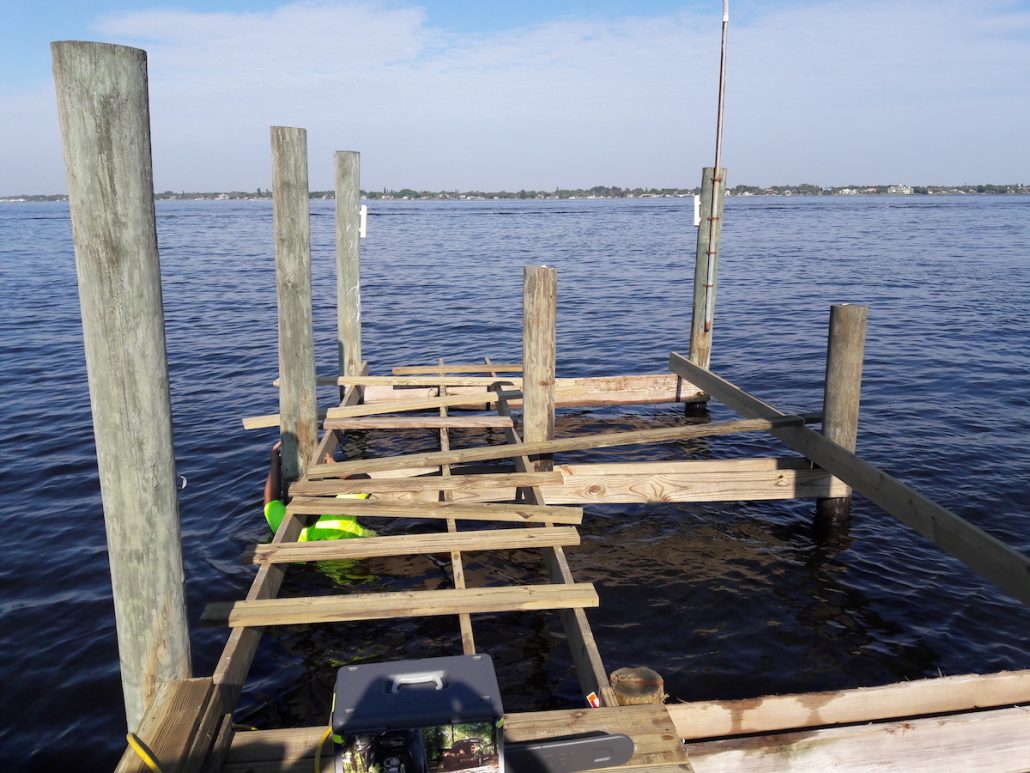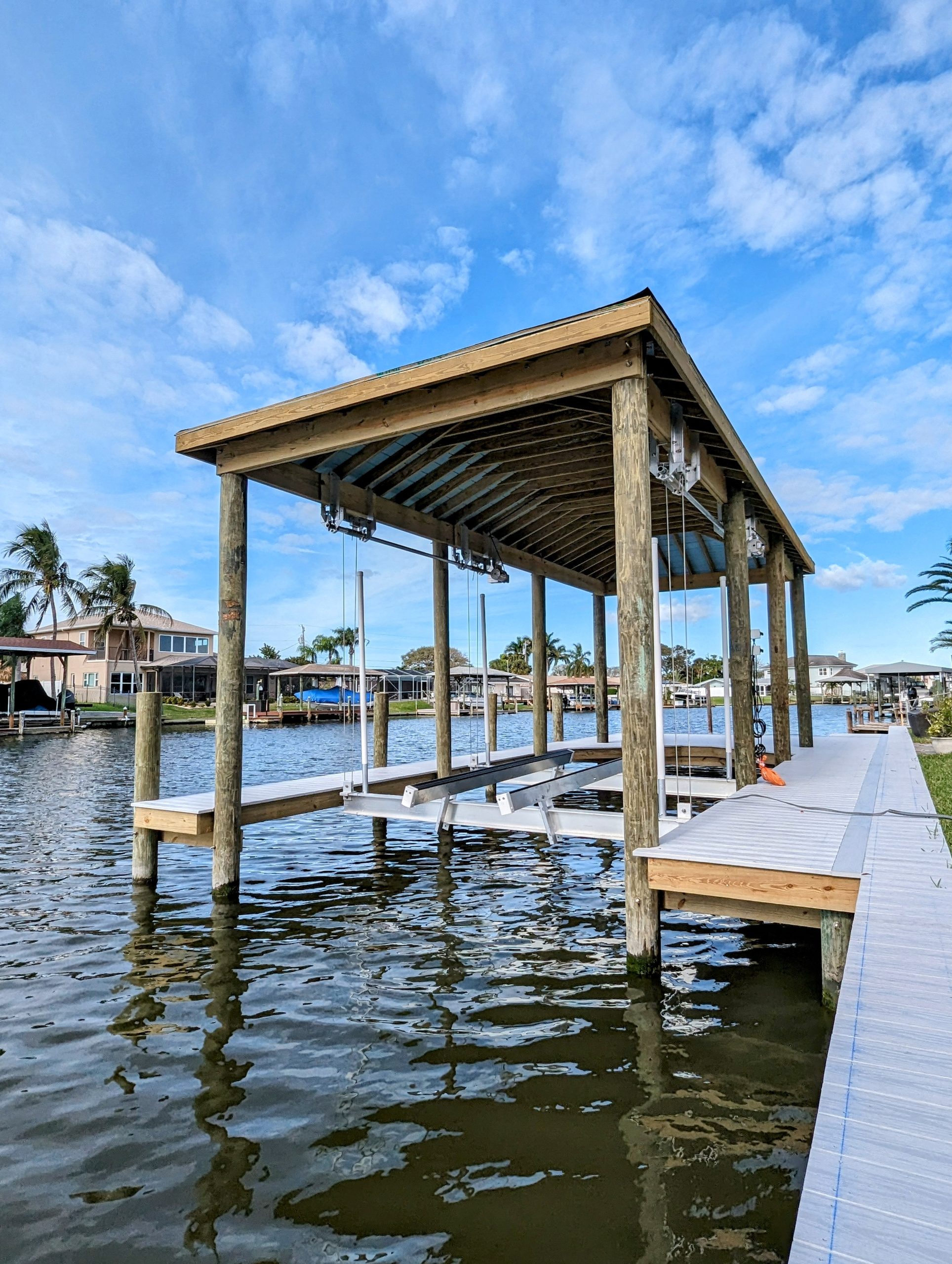Just How to Address Common Dock Fixing Issues for Safe Water Tasks

Identifying Common Dock Issues
Identifying common dock concerns is critical for keeping the performance and safety of your waterfront home. Regular examinations can aid discover problems before they become serious, guaranteeing both the long life of the dock and the security of those who utilize it.
One more common trouble is the deterioration of flotation tools. These gadgets are essential for maintaining the dock buoyant, and any type of damages or leaks can create the dock to list or sink. Regularly inspecting for leakages or waterlogged floats can preempt more considerable concerns.
Furthermore, algae and barnacle buildup on the dock's surface can produce dangerous and unsafe problems. This biofouling not only poses a danger to customers yet can additionally speed up the wear and tear of the dock products.
Lastly, inspecting for indicators of rust on steel parts is necessary. Rust can endanger the honesty of the dock's structure, making it hazardous. By consistently identifying these usual dock problems, you can ensure that your dock stays useful and protected for many years to come.
Repairing Rotting Timber
When addressing the issue of deteriorating timber on your dock, it is critical to act swiftly to stop more wear and tear. Begin by extensively examining the whole structure to recognize all affected locations. Use a screwdriver to penetrate the wood; if it sinks in easily, the wood is most likely decomposed and needs instant focus.
Once determined, remove the decayed sections making use of a saw or carve. Make certain to cut down to healthy and balanced, solid wood, ensuring you get rid of all jeopardized product. After elimination, deal with the continuing to be timber with a wood preservative to stop future rot. This therapy will help secure versus moisture, which is the main reason for wood degeneration.
Following, replace the gotten rid of areas with marine-grade lumber or pressure-treated wood, which are a lot more resistant to water damage. Safeguard the new pieces with galvanized or stainless-steel bolts to stop deterioration. In addition, using a water resistant sealer to the brand-new wood can give an added layer of security.
Securing Loosened Boards
How do you guarantee your dock remains safe and useful for all its users? One crucial facet is securing loose boards, which can or else pose considerable dangers. Loose boards not only raise the danger of stumbling however can also jeopardize the architectural stability of the whole dock.

For reinstallation, utilize stainless or galvanized steel screws, as these products use exceptional resistance to corrosion in aquatic settings. Make sure the screws are long sufficient to permeate deep into the underlying assistance framework, but not so long that they protrude with the dock's surface area. Pre-drilling pilot openings can aid prevent the wood from splitting.
Last but not least, keep a normal assessment routine to determine and resolve any type of brand-new issues promptly. By safeguarding loose boards efficiently, you contribute to the overall safety and longevity of your dock, making it a reputable system for water anonymous tasks.
Maintaining Unstable Pilings
Ensuring the stability of unstable pilings is critical to preserving a practical and safe dock. Unstable pilings can jeopardize the whole structure, posing considerable threats go to customers and possibly resulting in expensive fixings. The initial step in supporting these vital parts is a comprehensive evaluation. Analyze the pilings for indicators of rot, damage, or shifting. Use a level to look for vertical alignment and guarantee they are driven deep sufficient right into the substrate to give sufficient support.
If the pilings are discovered to be unpredictable, one effective technique for support is making use of additional supporting. Cross-bracing with dealt with lumber or galvanized steel can dramatically enhance security. Support the braces firmly to both the pilings and the dock structure to distribute lots uniformly.

Routine maintenance and routine review of the pilings' security are critical to guaranteeing long-term dock safety and performance.
Replacing Rusty Equipment
Resolving unstable pilings is simply one facet of keeping a dock's honesty; an additional critical problem is replacing rustic hardware. Over time, exposure to moisture and salt can result in the oxidation and deterioration of screws, screws, and braces, endangering the entire framework's safety and security. Regular evaluation for rust is necessary, particularly after extreme climate or seasonal modifications.
When corroded equipment is determined, prompt activity is needed. Begin by selecting marine-grade stainless steel or galvanized hardware, both created to stand up to the extreme aquatic environment. Guarantee that you have the ideal tools, such as wrenches and screwdrivers, to securely remove the old, corroded items without causing further damages to the dock.
After removing the rusty equipment, extensively tidy the affected areas to eliminate any type of residual rust or debris. Apply a rust-inhibiting primer to revealed steel surface areas prior to mounting the brand-new equipment. Tighten up all components firmly to stop future loosening, and regularly check the installations to guarantee recurring stability.
Changing corroded hardware not just prolongs the dock's lifespan however also dramatically enhances the safety and security of water activities. By proactively taking care of rust, you secure both the framework and its individuals, ensuring a safe and satisfying waterside experience.
Verdict
Normal evaluations and maintenance are necessary to deal with usual dock repair work issues and make sure safe water activities. By recognizing and fixing problems such as decaying timber, loosened boards, unsteady pilings, and corroded hardware, structural stability and durability can be substantially improved. The application of marine-grade materials and ideal treatments additionally strengthens the dock versus environmental stress factors. Such positive measures add to the overall security and capability of dock frameworks, promoting a safe and secure atmosphere for water-based activities.
Guaranteeing the security of water activities hinges significantly on the appropriate upkeep and repair of docks (Dock Repairs). These devices are important for keeping the dock resilient, and any type of damages or leaks can create the dock to listing or sink. By regularly identifying these usual dock concerns, you can make sure that your dock remains safe and secure and useful for years to come
Making sure the stability of unstable pilings is critical to preserving a secure and functional dock.Regular examinations and upkeep are essential to address common dock repair issues and make sure safe water tasks.
Comments on “The Importance of Timely Dock Repairs for Beachfront Security”